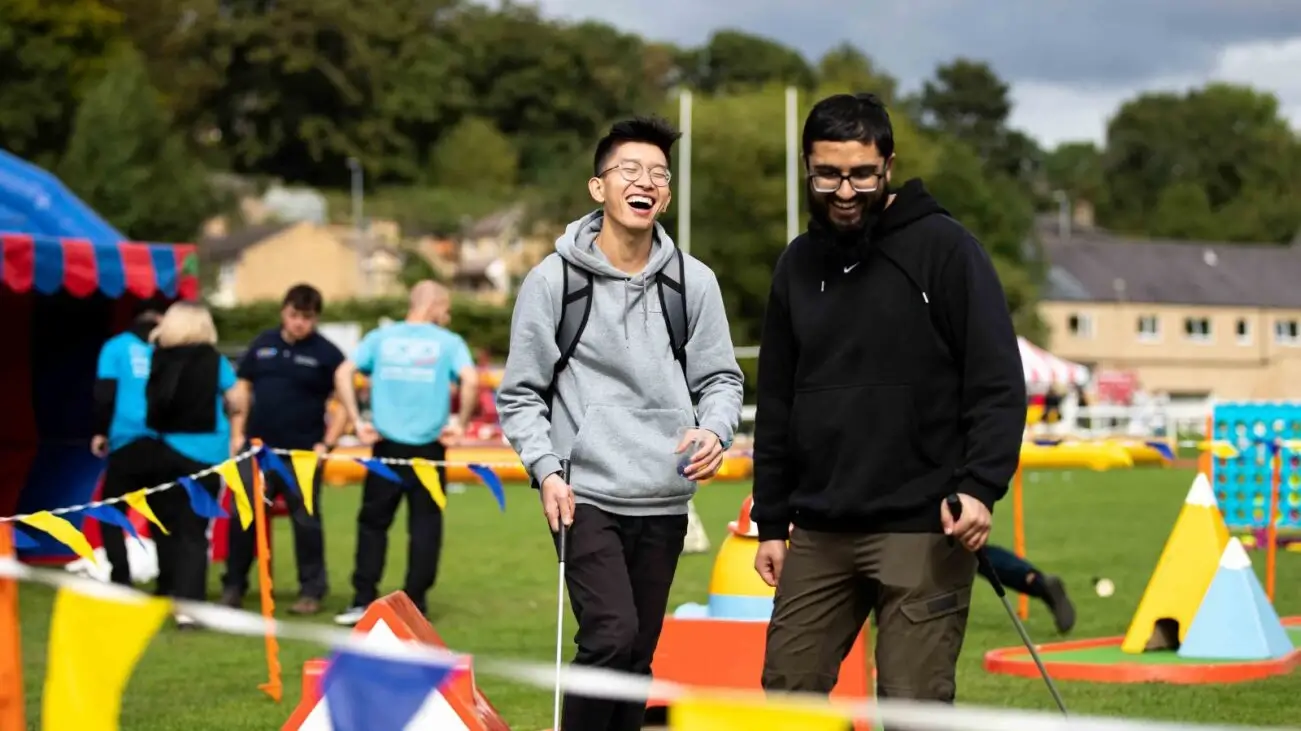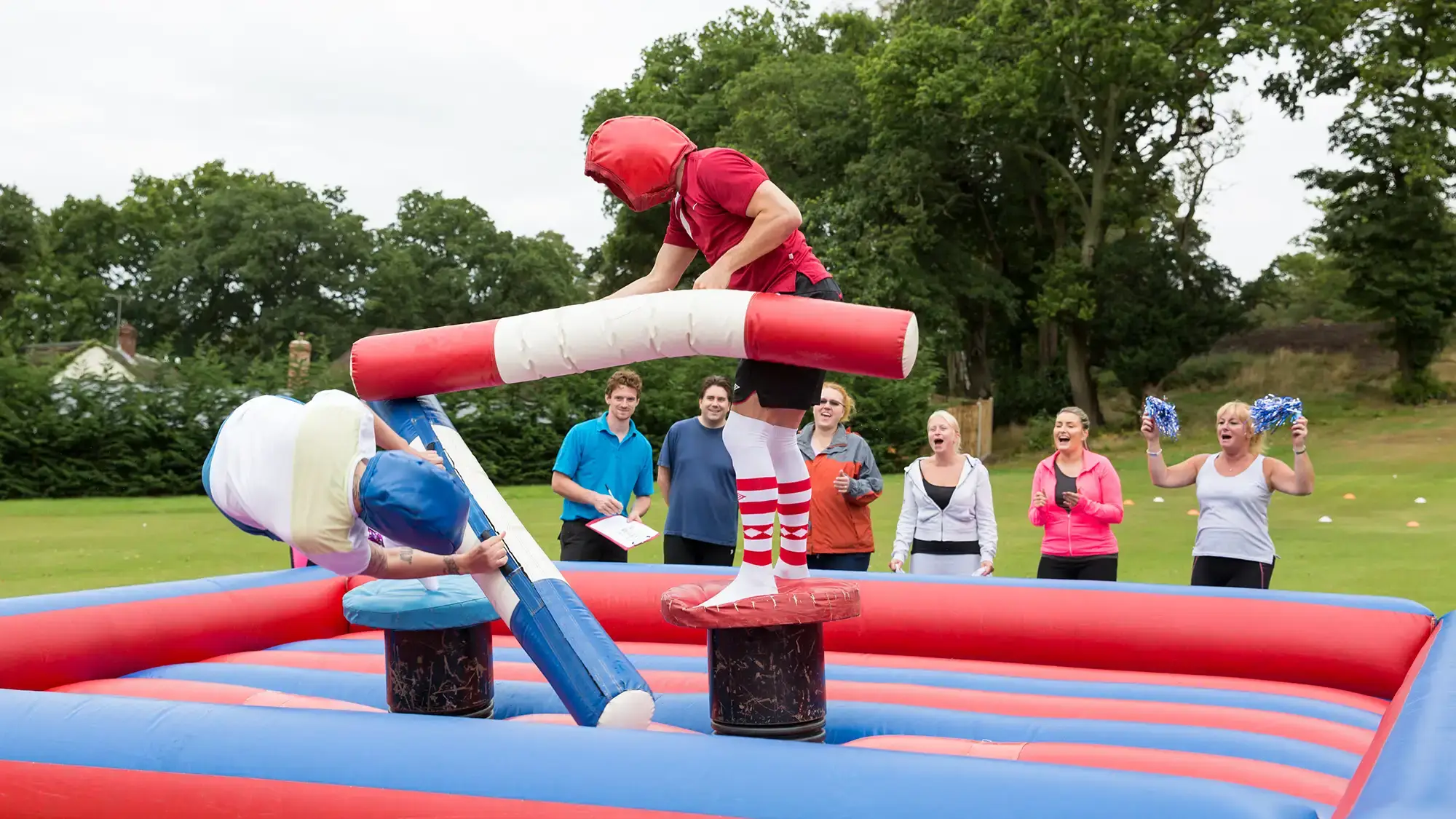Our event management team puts on hundreds of team building events each year. Indoor team building events are generally more popular than outdoor events because of their year-round accessibility. Indoor team building is preferred by small groups because indoor venues are generally more cost-effective to hire, requiring fewer logistical arrangements than outdoor venues. With the UK weather being unpredictable even in the summer months, choosing an indoor venue for your team building event provides a more controlled environment and avoids the need to cancel an event last minute because of bad weather.
But how do you plan an indoor team building activity for small groups and where to begin? As team building specialists, GOTO Events recommends the following 9 steps when organising an indoor team building event, although you can apply these to outdoor team building events or team building for larger groups, too.
Step 1 – Assess Your Team’s Needs and Set Objectives
The first step in planning an indoor team building activity for small groups is assessing your team’s needs and preferences. This step will help you identify clear objectives which you can use after the event to determine the impact and success of your team building activity. Because you’re organising a team building event for a small group of people, this step shouldn’t require too many resources and you could get everyone involved, from directors to team leaders and all those participating in the team building event.
Here are some methods you can use to gather insights on the needs and expectations of your team:
- Conduct individual interviews and team surveys. Encourage team members to express their views and thoughts on team interactions, challenges, preferences and concerns through platforms such as feedback sessions, anonymous surveys and one-on-one interviews.
- Observe team interactions. Pay attention to team dynamics during regular work interactions and identify patterns in communication, collaboration and potential areas for improvement.
- Get insight from team leaders. Consult team leaders or managers for their perspectives on team dynamics.
- Review past performance. Analyse past team projects or events to identify successful and challenging aspects.
- Encourage self-assessment. Prompt team members to reflect on their own preferences and working styles.
After collecting your data, use this to extract lessons and information that will help you plan a personalised team building activity. It’s also a good idea to keep records of the insights gathered for future reference.
Step 2 – Consider Your Budget
Reviewing your team building budget at the outset of the planning process is crucial for making sure you choose a team building activity that aligns with any financial constraints. Most small businesses wanting to organise a team building event for their employees have an established budget and therefore making informed decisions from the get-go will help you effectively align your allocated budget with your team building objectives.
Here are some of the areas you should budget for when organising an indoor team building activity for small groups:
- Venue rental. Bear in mind that the selected venue has to fit the team building activity and the size of your group.
- Facilitator fees. If you prefer to leave the harder steps of organising a team building event to a professional, GOTO Events is here to help you put on an unforgettable team building event for groups of all sizes.
- Materials, equipment, technology and décor. This will depend on the nature of your team building activity. Consider hiring a team building facilitator which will provide all the equipment needed, like GOTO Events does.
- Catering and refreshments. Depending on the lengths of your team building event, providing food and drinks will keep your team energised and satisfied.
- Logistic and transportation. The costs associated with transporting participants and materials to the event venue also need to be considered, if applicable.
- Marketing and communication. For small groups, the promotional costs for the event may be minimal, and you might even rely solely on email communication.
- Other costs. Other costs which could apply to your team building event include insurance and permits costs, professional photography and videography costs, over-night accommodation and employee gifts.
Step 3 – Choose an Indoor Team Building Activity for Small Groups
Now that you’ve assessed your team’s needs and preferences, set out your goals and the budget is approved, it’s time to choose a team building activity for your small team. Start by aligning your objectives from the assessment stage with team building options you find online. Consider your company’s targets, the team’s skill levels, personality and the group’s preferences. Whether it’s icebreakers, trust-building exercises, immersive experiences or creative workshops, the right team building activity should encourage collaboration, communication and contribute to the an overall positive and inclusive atmosphere.
Here are some indoor team building ideas offered by GOTO Events, ideal for small groups:
- Masterpiece team building, ideal for creative teams that don’t mind to get a little messy.
- Under Pressure team building, ideal for creating a fast-paced, nail-biting atmosphere.
- Crime Scene Experience team building, ideal for an immersive and thrilling experience.
- Teamopoly team building, ideal for nostalgic but also competitive teams.
- Quid Games team building, ideal for an action-packed event.
- Ultimate Quiz team building, ideal for quiz fanatics and traditional teams.
- Charity Bike Build team building, ideal for organisations wanting to give back to the community.
- Get even more indoor team building ideas here.
Step 4 – Select an Appropriate Venue
accommodate the chosen indoor team building activity. Consider factors like the venue’s capacity, layout and accessibility. If your office doesn’t provide the appropriate space for your team building activity, and you have to find a venue for corporate hire, here are some question to ask yourself before making a decision:
- Does the layout of the venue encourage interaction?
- Does the venue provide the amenities I need, including technological equipment and support?
- Does the venue provide catering options?
- Does the cost of hire align with my budget constraints?
If the costs of the venue hire is slightly above your budget, try to negotiate costs to strike a balance between affordability and creating an optimal indoor setting for your team building event.
Opting for an indoor team building venue offers a controlled and versatile environment, shielding your team building event from weather uncertainties. Indoor venues can also be more affordable to hire than outdoor spaces as they require fewer operational preparations.
If you need help finding the ideal venue for your indoor team building activity for small groups, we offer a free venue finding service to ensure your team building event has the perfect space in your chosen location. Speak to our friendly event management team today.
Step 5 – Map Out A Timeline
Mapping out an event timeline is important for a seamless execution of your indoor team building activities for small groups. Your timeline should include the following three stages:
- Pre-event. This stage includes the preparation of your team building event, everything we’ve included in this guide from step 1 to step 7, such as team assessment, budgeting, activity selection, venue finding, mapping out the timeline, planning the logistics and promoting the event to your team. Depending on the size and requirements of your indoor team building event, you should allocate enough time for this stage. Some team building events would require just a few weeks of preparation whilst others should be planned well in advance. GOTO Events can help you streamline your pre-event preparations and timeline by providing you with top-rated team building event activities and execution.
- During the events. For the team building event itself, allocate sufficient time to ensure a relaxed atmosphere. Integrate breaks for refreshments and networking opportunities, but don’t allow your participants to get bored. Prepare a detailed timeline of your team building activities to help you keep your guests engaged throughout the event.
- Post-event. After the event, dedicate time to gather feedback promptly. This will help you assess the success of your team building event.
Step 6 – Plan Logistics
The logistics you need to consider depend on the team building activity you will be running and the size of your group. Here are some operational preparations you need to consider:
- Venue décor and sitting;
- Event staffing;
- Activity materials and props;
- Internet connection;
- Technological equipment such as audio-visual equipment;
- Transportation to and from the venue for participants, staff and equipment;
- Catering (if applicable);
- Waste management system
For a hassle-free team building planning, GOTO Events offers a wide range of fun and interactive team building activities and we execute each activity from start to finish, so you can join in the fun with the rest of your team. We also provide all necessary materials and equipment and full set-up and wrap-up, so there’s less logistical aspects that you have to worry about. We are just one phone call away if you would like to have a no-obligation, informal chat about your work event.
Step 7 – Communicating the Team Building Event to Your Team
Promoting the upcoming team building event to your small team should be done with enthusiasm to create anticipation and excitement. Craft a clear message and provide essential details in written form to allow your guests easy access to the information whenever necessary.
If participation in the indoor team building event is optional, incorporate a systematic approach for gathering RSVPs or attendance confirmations.
Here are some aspects you should communicate to your team about the upcoming team building event:
- Date and time
- Event location
- Event purpose and benefits
- Activities involved
- Dress code
Step 8 – Put On an Unforgettable Experience For Your Team
With the event plan in check, it’s time to put on an unforgettable experience for your team! With coordination and enthusiasm, here is a general to-do list for the live indoor team building activity for small groups:
- Welcome participants warmly
- Verify that all materials and equipment are in place
- Encourage engagement throughout the event
- Guide the team through planned activities (adapting as needed)
- Take photos and videos
Step 9 – Post-event Evaluation and Follow-up
This step is often overlooked by companies when organising team building events. However, it’s crucial to assess the event’s success by revisiting the objectives form the first step. This is also a valuable opportunity to gather participant feedback. Use your post-event analysis to refine future team building strategies and to continue to enhance the team’s performance.




